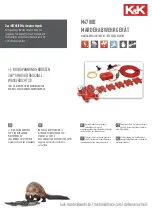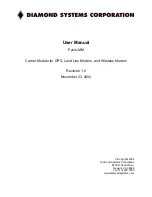
12
INLET PRESSURE (Pu)
OUTLET PRESSURE (Pd)
MOTORIZATION PRESSURE (Pm)
PILOT FEEDING PRESSURE (Pup)
ATMOSPHERIC PRESSURE (Pb)
V
V
R
R
M
M
S
S
L
L
A
A
B
B
R1
R2
R3
R4
Types EZH and EZHSO
Europe, Middle East and
Africa Only
Figure 13. Upstream Wide-Open Monitoring System Operational Schematic for DN 25, 50 and 80
Type
SA/2
Type
SA/2
Type
PRX
Type
PRX
Type EZH
Type EZHSO
MONITORING SYSTEMS
Monitoring regulation is overpressure protection by
containment, therefore, there is no relief valve to vent to
the atmosphere. When the working regulator fails to control
the pressure, a monitor regulator installed in series, which
has been sensing the downstream and control pressure,
goes into operation to maintain the downstream pressure
at a slightly higher level than normal pressure. During an
overpressure situation, the monitoring system keeps the
customer on line.
Also testing is relatively easy and safe. To perform a
periodic test on a monitoring regulator, increase the outlet
set pressure of the working regulator and watch the outlet
pressure to determine if the monitoring regulator takes
over at the appropriate outlet pressure.
Wide-Open Monitoring Systems
In normal operation of a wide-open configuration, the
working regulator controls the system’s outlet pressure.
With a higher outlet pressure setting, the monitor regulator
senses a pressure lower than its setpoint and tries to
increase outlet pressure by going wide open. If the working
regulator fails, the monitoring regulator assumes control
and holds the outlet pressure at its outlet pressure setting.
Inlet pressure (P
u
)
Motorization pressure (P
m
)
Pilot feeding pressure (P
up
)
Outlet pressure (P
d
)
Atmospheric pressure (P
b
)
Type PRX:
S - Bleed port
B - Supply port
Type SA/2:
V - Sensing
R - Pilot
M - Inlet
L - Motorization port
A - Sensing port
Figure 13 shows an upstream wide-open monitor
Type EZH (Spring-to-Close) and a downstream active
regulator Type EZHSO (Spring-to-Open). With this
configuration, in case of regulator main diaphragm failure,
it will fail in open position letting the monitor work properly;
in case of monitor main diaphragm failure, it will fail in close
position guaranteeing a protection against overpressure
to downstream system.
The schematic from Figure 13 represents the configuration
for the DN 25, 50 and 80, for the DN 100, 150 and 200 the
schematic remains the same with the remark that a check
valve (Figure 28) must be installed between outlet pressure
and loading pressure impulse lines of the regulator and
wide open monitor as well.













































